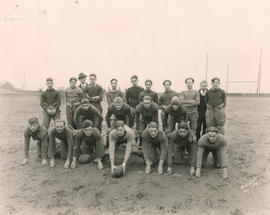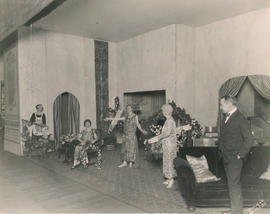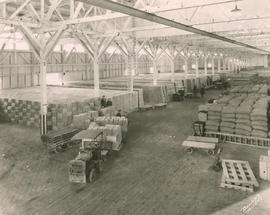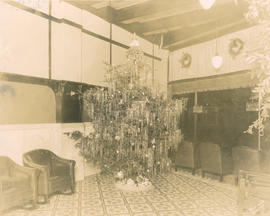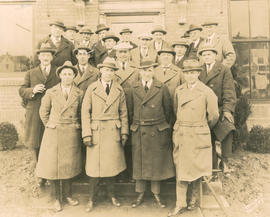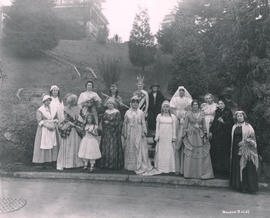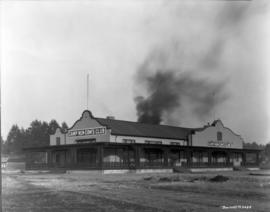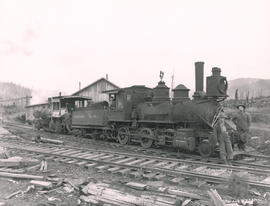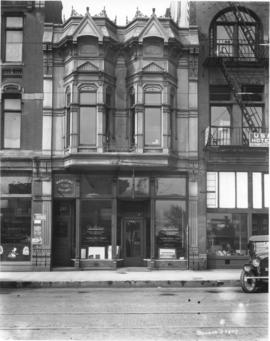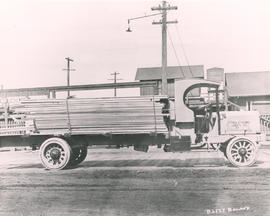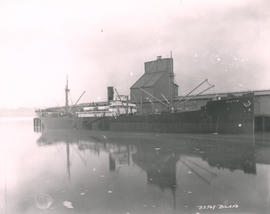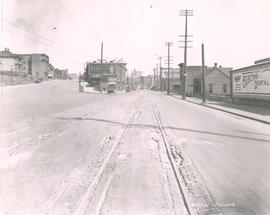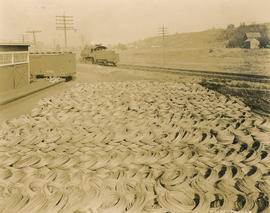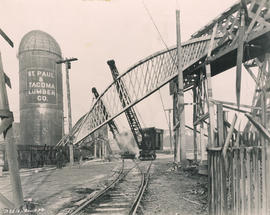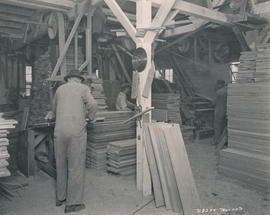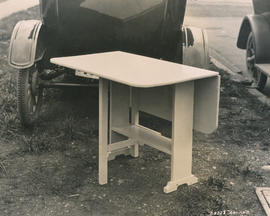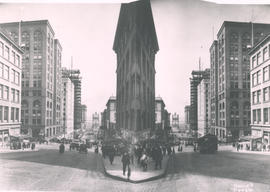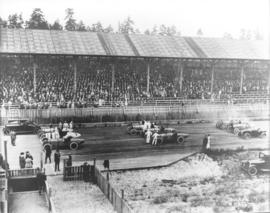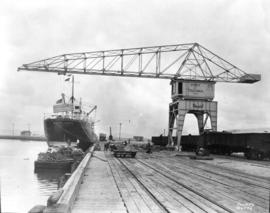Twenty thousand race fans crowded into the covered grandstands of the Tacoma Speedway to watch the July 4, 1921 Speedway Classic. The drivers, mechanics and race officials stand on the board track prior to the start of the 250 mile race. The race cars are lined up on the track three abreast, with the Marmon Speedster pace car in the lead. In the front row are, left to right, #6 Roscoe Sarles' Duesenberg, #1 Eddie Hearne's Revere Special and #3 Frank Elliott's Leach Special. Middle row: #5 Joe Thomas's Duesenberg, #7 Eddie Miller's car, #2 Tommy Milton's Durant Special. Last row: #27 Tom Alley's Frontenac, #12 Anton Soules' Frontenac, #21 Eddie Pullen's Duesenberg. The crowd was treated to an exciting race where Tommy Milton repeated his win of the previous year, breaking all distance speed records with an average speed of 98 mph. He completed the race in 2:34:00, followed closely by Sarles at 2:34:52. (TDL 7/2/1921 - 7/5/21, all pg. 1) G51.1-081
Racetracks--Lakewood--1920-1930; Automobile racing--Lakewood--1920-1930; Tacoma Speedway (Lakewood); Racing automobiles--1920-1930; Grandstands--Lakewood;
